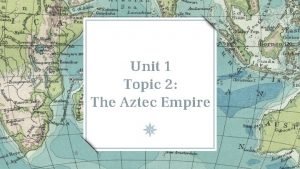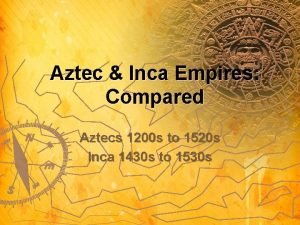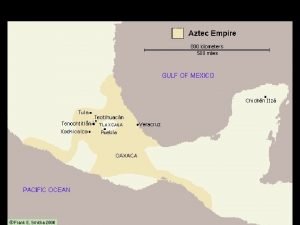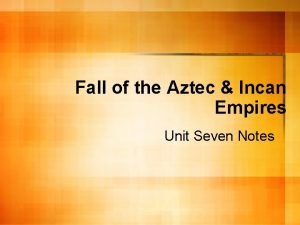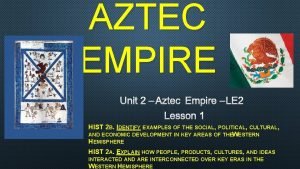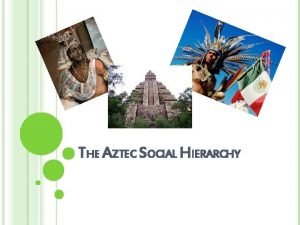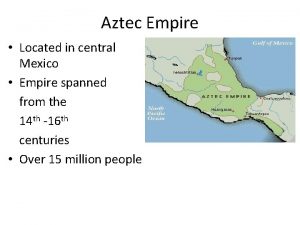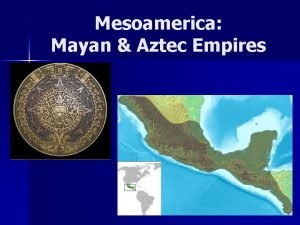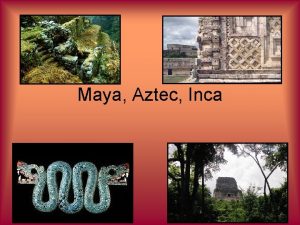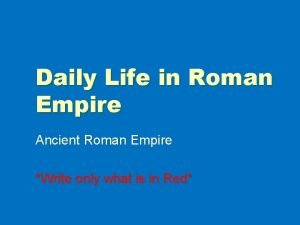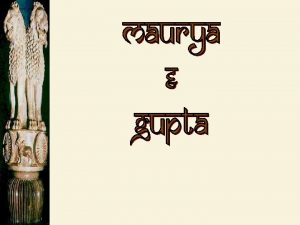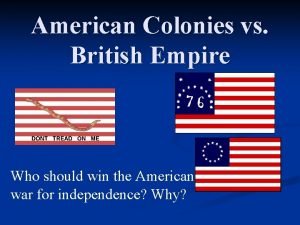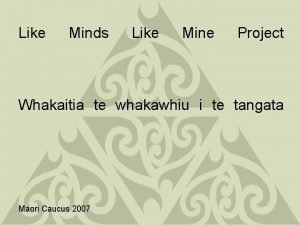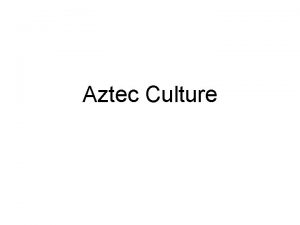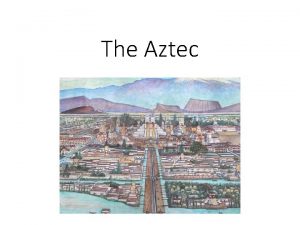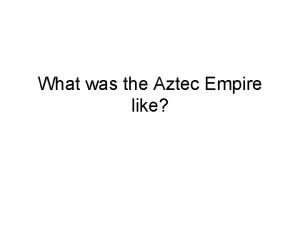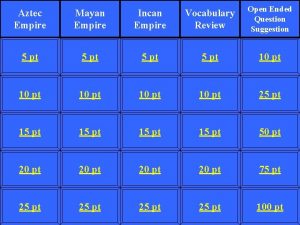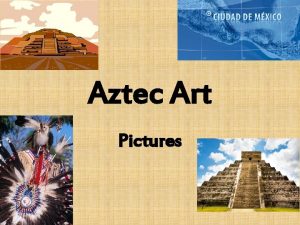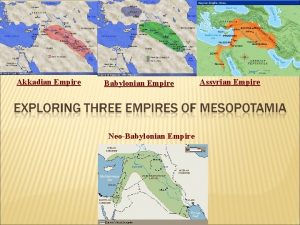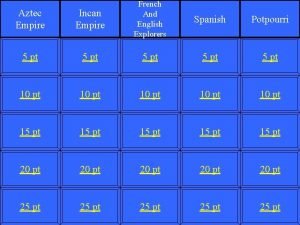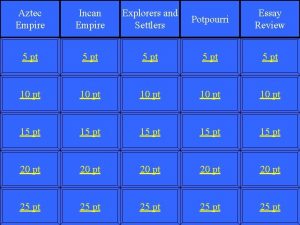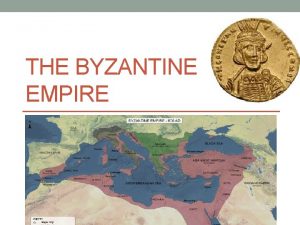What was the Aztec Empire like The Aztec

















- Slides: 17

What was the Aztec Empire like?

The Aztec Empire is part of Mexico today. According to Aztec legend, the gods told the nomadic people who had entered the valley of Mexico to search for an eagle perched on the top of a cactus. The eagle would be holding a snake in its beak. When they saw the sign on a swampy island in Lake Texcoco they established the city of Tenochtitlan.


Tenochtitlan • Tenochtitlan was linked to the mainland with causeways. It had an aqueduct to ensure a fresh water supply and sewers carried waste materials away.

Tenochtitlan • Over the years Tenochtitlan grew into a great city with open plazas and market places.

Tenochtitlan • “The city has many squares where markets are held and trading is carried on. There is one square where there are daily more than 60, 000 souls, buying and selling, and where are found all the kinds of merchandise produced in these countries, including food products, jewels of gold and silver, lead, brass, copper, zinc, bones, shells, and feathers. ”

Food and Work • Aztecs ate corn and beans, tortillas grilled and dipped in tomatoes. They also ate pancakes stuffed with tadpoles!

Medicine and Writing • The Aztec used a lot of herb and prayer in their medicine. • The Aztec also developed a writing system with pictographs that gave an image of the story. – Called N’ahuatl

The Aztec Calendar • Their calendar was very sophisticated for their time. It consisted of 360 days a year, over 18 months, excluding five days for sacrifice. It is approximated that this calendar was used 100 years before the Gregorian calendar, which is the calendar we use today.

Montezuma • Montezuma was the Emperor of the Aztecs in the sixteenth century. He was a conquering king who often went to war with his neighbors. He kept the gods on his side by making human sacrifices to the gods.

Human Sacrifices • According to some accounts Montezuma sacrificed tens of thousands of prisoners at a time. Each had to be individually killed. The usual method of sacrifice was to open the victim’s chest, pull out his heart while he was still alive, and then knock the victim down the temple stairs. The temple stairs were covered in blood.

Religion • Polytheistic – Over 1000 gods

Huitzilopochtli • Huitzilopochtli: the sun and war god. • He battled the forces of darkness each night and was re-born each morning. There was no guarantee the sun would win, so human sacrifices were made.

Quetzalcoatl • Quetzalcoatl was a former white skinned and bearded priest. He came from the east and promised to return. He was the god of civilization and learning. Also considered the ‘feathered serpent. ’

Conquering Principles • Conquered people who could govern themselves – Had to pay tribute (tax) • Enemy soldiers were used as sacrifice

Class Structure

Fall of the Aztec Empire • Destroyed with the arrival of Cortes and the Spanish Conquistadores.
 Tenochititlán
Tenochititlán 1200
1200 Aztec empire size
Aztec empire size How did the aztec empire rise
How did the aztec empire rise Hernan cortes wanted poster
Hernan cortes wanted poster What is the aztec empire
What is the aztec empire Aztecs hierarchy
Aztecs hierarchy Facts about the aztecs
Facts about the aztecs Where was the aztec empire located
Where was the aztec empire located Mesoamerican aztec climate
Mesoamerican aztec climate Map of aztec empire
Map of aztec empire Life in the roman empire
Life in the roman empire Venn diagram of mauryan and gupta empires
Venn diagram of mauryan and gupta empires American empire vs british empire
American empire vs british empire Kakov
Kakov Why does ethanol look like water but behave more like wood?
Why does ethanol look like water but behave more like wood? I like flowers
I like flowers Like minds like mine
Like minds like mine
